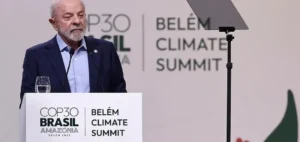US authorities are imposing new sanctions aimed directly at the liquefied natural gas (LNG) carriers used by Russia to circumvent international restrictions.
These vessels, often operating under foreign flags, are at the heart of a network designed to conceal the origin of cargoes and evade global scrutiny.
By targeting this “phantom fleet”, the current measures are designed to further restrict Russia’s export capabilities.
The sanctions cover several LNG tankers, including those registered under the flags of countries such as Palau and Panama.
These vessels use sophisticated techniques to avoid GPS tracking systems, making them difficult to trace and thus facilitating LNG exports to Asian markets, despite international restrictions.
Impact on LNG trade
The restrictions imposed by the United States are complicating Russia’s operations in the LNG market, which has already been weakened by the war in Ukraine.
Asian buyers, who account for a significant share of the market, are increasingly reluctant to commit to vessels identified as part of the shadow fleet, due to the risks associated with sanctions.
In addition, the increased traceability of LNG cargoes makes these transactions riskier for Russia’s trading partners.
In Europe, sanctions prevent the transshipment of Russian LNG, accentuating tensions on energy markets.
This is forcing European states to diversify their sources of supply, although these alternatives may prove more costly and complex to implement.
Consequences for Russian energy projects
U.S. sanctions are a direct threat to Russia’s energy ambitions, particularly the projects under development in the Arctic, such as Arctic LNG 2.
These projects, essential to Russia’s LNG export growth plans, now face major obstacles, both in terms of financing and technology.
Market players anticipate delays and additional costs, which could reduce Russia’s competitiveness in the global LNG market.
Russia is aiming for a significant increase in its LNG market share by 2030, but recent sanctions are jeopardizing these goals.
The Russian energy sector finds itself increasingly isolated, with limited access to key markets, which could hamper the realization of future projects.






















